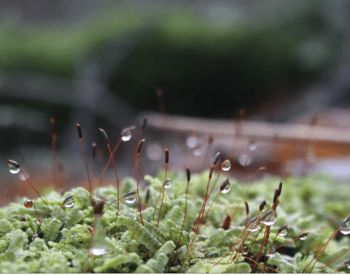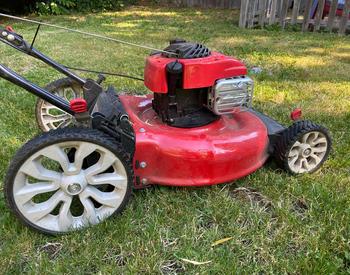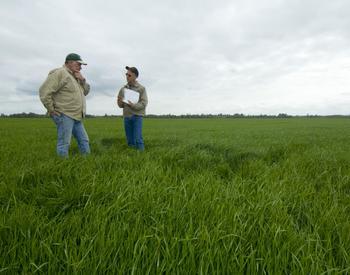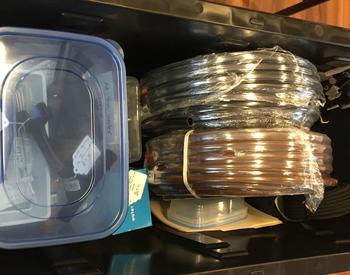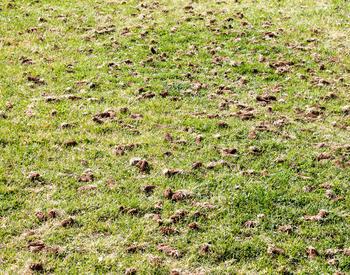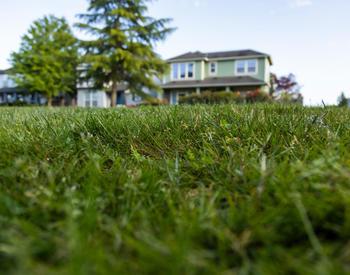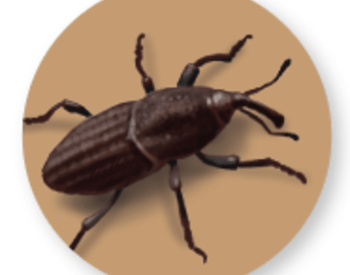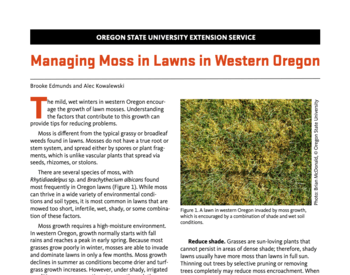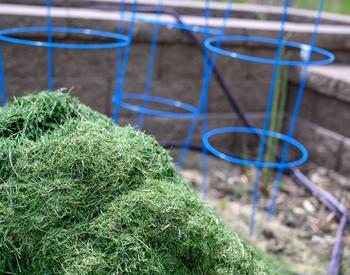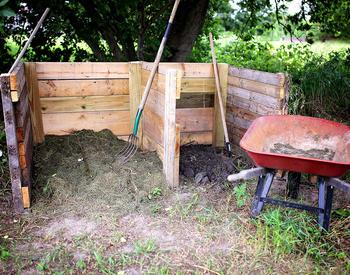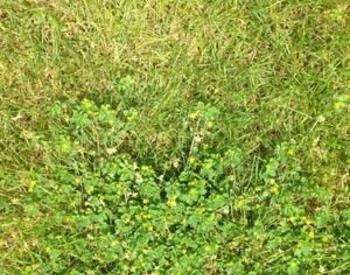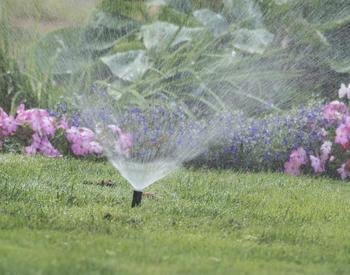My so-called lawn needs help — it consists of clumps of grass with bare spots between. My small yard is completely fenced with a large apple tree shading much of it, so the grass gets at most 3 to 4 hours of sun a day. What do you think of "no mow" creeping red fescue? Would I have to rototill the existing grass, or could topsoil be brought in and the fescue planted (by seed?) in the bare spots to fill in over time as it grows?
There is no such thing as "no mow" grass. That slogan is simply a sales pitch.
Even though fine fescue is often touted as being shade tolerant, it does not do well in western Oregon shade because all the moisture makes it very susceptible to leaf spot diseases.
Given the site you describe with very little sunshine, you are better off planting a shade tolerant ground cover like Vinca minor, Pachysandra, or Ajuga reptans, for example. Or, as an alternative, you could plant a mixture of shade tolerant shrubs and perennials. Either approach would require spraying out your lawn with glyphosate and either removing the sod or tilling the sod into the soil.
If you don't want to go to all that effort, you can buy some creeping red fescue – it doesn't have to be the "no mow" variety – and spread it on the bare spots at a rate of 6 to 8 lbs. of seed per 1,000 square feet. Another option would be colonial bentgrass. It is not as susceptible to leaf spot diseases. You will likely have to buy it online. The seeding rate of colonial bentgrass is only 1 to 2 lbs. of seed per 1,000 square feet (there are 3,000,000 seeds per pound so it is like dust).
You should scarify the existing sod/soil first with a metal rake so you get good soil/seed contact. Wait to plant until after April 15. Make sure to keep the surface moist for 10 - 14 days or until the seed germinates and then for a couple more weeks water it daily and make sure if you get a hot day, you give it a little water in the afternoon. After a month, the roots should be deep enough so you don't have to water as frequently.
This is your cheapest option. You can see how it does and if you don't like it, you can go with the ground cover option.
Use pesticides safely!
- Wear protective clothing and safety devices as recommended on the label. Bathe or shower after each use.
- Read the pesticide label—even if you’ve used the pesticide before. Follow closely the instructions on the label (and any other directions you have).
- Be cautious when you apply pesticides. Know your legal responsibility as a pesticide applicator. You may be liable for injury or damage resulting from pesticide use.


